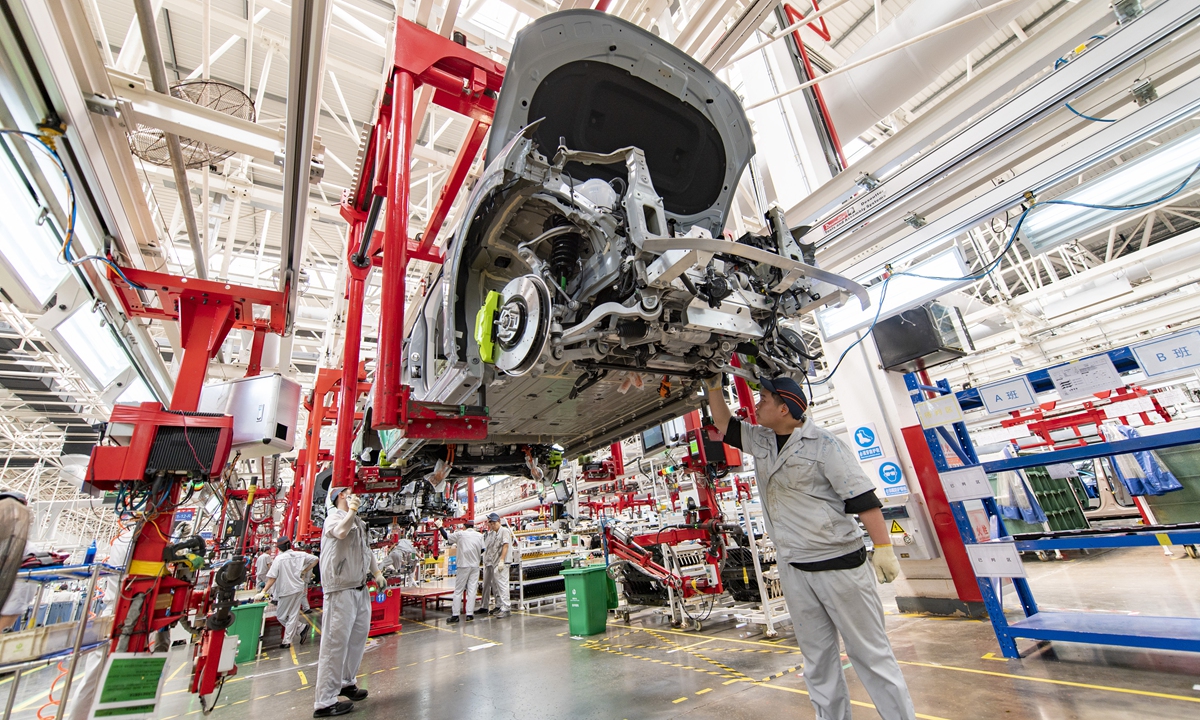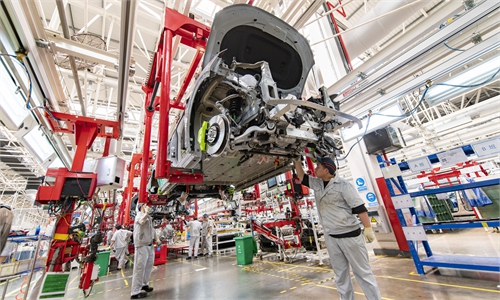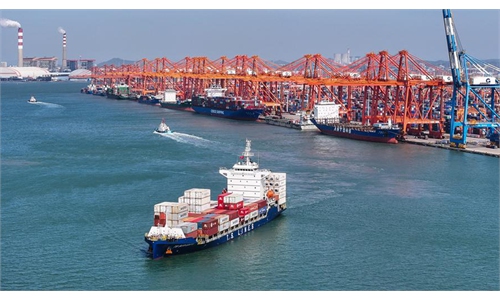
Workers are busy at a production line of new-energy vehicles (NEVs) in Jinhua, East China's Zhejiang Province on July 2, 2024. The volume of NEV production is rising driven by growing demand. Zhejiang is striving to produce more than 1.2 million NEVs annually, or more than 60 percent of the province's total automobile production, by 2025, and its NEV output will account for about 10 percent of the country's total. Photo: VCG
China's annual output of new-energy vehicles (NEVs) surpassed 10 million units as of Thursday, making it the first country to achieve this milestone, CCTV News reported on Thursday.The report, citing data from industry group China Association of Automobile Manufacturers (CAAM), said that the benchmark was reached on Thursday morning, surpassing the full-year output of 9.59 million NEVs in 2023.
This milestone leaves other countries in the rear-view mirror.
China started tracking NEV sales and output in 2013, with 18,000 units produced that year. By 2018, NEV output had reached 1 million, and it exceeded 5 million in 2022.
With a month and a half remaining this year, automotive sector experts project that China's total NEV output will exceed 12 million units by year-end, according to the CCTV News report.
The National Development and Reform Commission said in an article published in a domestic newspaper on Thursday that the NEV sector has become China's "most competitive strategic emerging industry" and bright calling card of China. Moreover, the rapid development of the domestic NEV industry is reshaping the development pattern of the global automobile industry, it said.
Analysts said that the milestone reflects China's leading status in NEV sales and output, and it underscores China's contribution to the global green transition in the face of rising climate change challenges.
China's achievement in the NEV sector has been widely recognized globally. The International Energy Agency, in its annual World Energy Outlook 2024 and Renewables 2024, said that China is driving the rise of electric mobility.
Some foreign reporters visiting Shenzhen, South China's Guangdong Province, the city that has the highest NEV penetration rate in China, noted that the metropolis is exceptionally quiet due to the mass use of NEVs.
Li Yong, a senior research fellow at the China Association of International Trade, told the Global Times on Thursday that a number of advantages, such as China's complete industrial chain, the government's steadfast policy to combat climate change and innovation-driven growth, contributed to the rapid rise of the Chinese NEV industry.
"In addition, China has always stuck to the path of openness and cooperation, facilitating global auto companies and NEV makers to invest and start partnerships in China, contributing a fast growth of the industry," Li said.
At a routine press conference on October 23, Foreign Ministry spokesperson Lin Jian urged developed countries to honor their words and create favorable conditions for international green cooperation, adding that protectionism, unilateralism and politicization will only harm the common interests of the international community.
The story of the global energy transition should not be a "China story." Rather, it should be a "global story" of solidarity and cooperation, Lin said.
There have been multiple milestones this year in China's NEV industry.
The NEV penetration rate, a gauge of popularity, climbed to 51.1 percent in the domestic market in July, meaning that NEV sales exceeded those of traditional vehicles with internal combustion engines.
In the first 10 months of 2024, China exported 1.06 million NEVs, up 6.3 percent year-on-year, data from CAAM showed.



